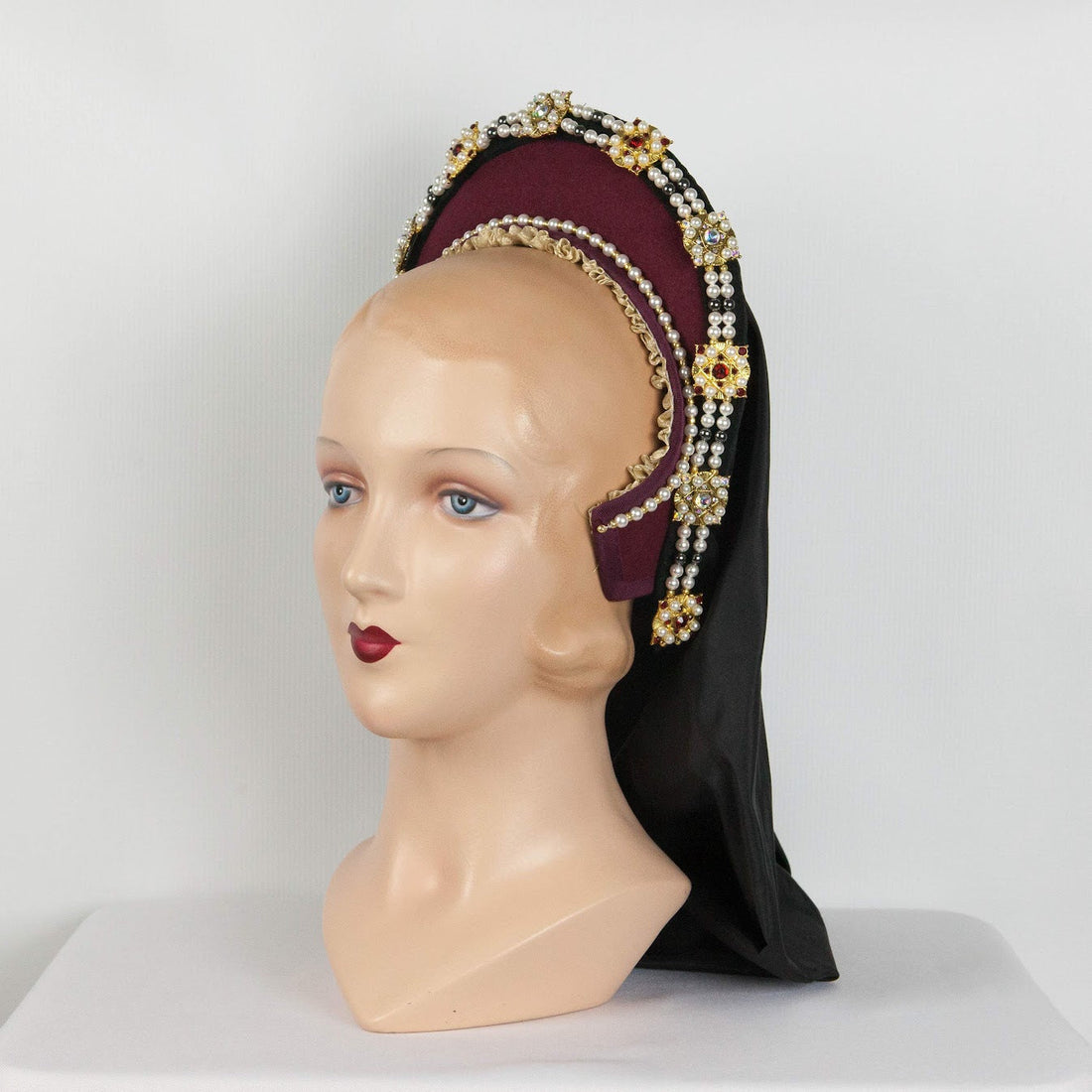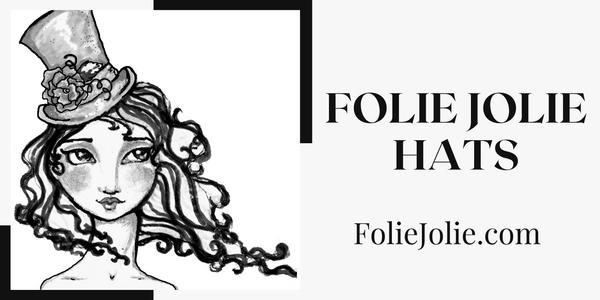
How to Wear a Renaissance French Hood
Share
Unveiling the Mystery of the Elizabethan French Hood
The French hood, in its essence, is a masterclass in layered elegance. It’s not just one piece, but a clever combination designed to beautifully frame the face and showcase the elaborate hairstyles of the era.
In my journey through millinery, I've certainly explored different interpretations of historical headwear. In the past, I even crafted a more "theatrical" version of the French Hood. It was built with a shaped, stiffened base cap and a buckram or felt crescent that stood up at the back of the head. And honestly? They were gorgeous creations! However, as research continually evolves, more recent findings suggest that particular construction isn't quite historically accurate.
Step 1: The Foundation – Hair in a Coronet
Before you even think about the fabric, you need the right base. For the French hood, this means your hair. The goal is to create a structure on your head that the hood can rest upon and be shaped by.
- Braid it Up! The most common method seen in portraits and understood through historical research is to braid your hair, often into two long braids.
- The Coronet Effect: These braids are then meticulously laced or wrapped around the crown of your head, forming a sturdy "coronet" or circlet. This isn't just for looks; this hair structure is key to giving the French hood its iconic shape. You know how it looks like a crescent in so many portraits? The current theory, and one that makes perfect sense to someone who's spent years figuring out how fabric behaves, is that the hood is actually pushed into that distinctive crescent shape by these underlying braids.
Step 2: The Coif (or Cap Kercher) – The Essential Underlayer
Once your hair is in its coronet, the next layer is the coif.
- A Secure Base: The coif (sometimes called a cap kercher) is a close-fitting cap that covers your braided hair. It’s typically made of linen or fine silk and is the unsung hero of the French hood ensemble.
- The Chin Strap Secret: If you look closely at many period portraits, you’ll often spot a small, almost invisible detail: a chin strap on the coif. This isn't just a stylistic flourish; it's a practical element that helps secure the base layer firmly to your head. It prevents the entire edifice from shifting as you move, dance, or greet your queen!
Step 3: Folding and Arranging the Hood
Now for the main event – the hood itself. This is the more decorative, often black velvet or silk, piece of fabric.
- The Fold: The hood isn't just a simple circle or rectangle; it's designed to be folded and carefully arranged on top of the coif and your hair coronet. The skill here lies in how the fabric is manipulated to create that distinct, almost architectural silhouette.
- Shaping the Crescent: As I mentioned, the underlying hair structure plays a huge role here. The hood is placed over the head, and the edges are carefully manipulated and perhaps even stiffened slightly (though not always rigidly so) to hug and emphasize the shape created by the braids underneath, forming that famous crescent.
Step 4: The Jewels – Billaments and Their Practicality
Finally, the sparkle! No French hood is complete without its dazzling array of jewels, known as "billaments."
- Mounted for Convenience: These exquisite ornaments aren't sewn directly onto the delicate hood fabric. Instead, they are typically mounted onto a base of silk-covered buckram. Buckram is a stiff fabric, often starched or treated, providing a firm but lightweight backing.
- Easy Attachment: This ingenious design means the billaments can be pinned or tack-stitched to the hood. This method was incredibly practical for the time. It allowed for easy removal for cleaning, repair, or even for simply changing out the jewels to match a different gown or occasion. Imagine how difficult it would be to clean or store a hood with permanently affixed, heavy jewels!
Crafting and wearing a French hood is truly an art form, a testament to the incredible ingenuity and aesthetic sensibilities of the Elizabethan era. It’s a piece that demands attention to detail, from the braiding of the hair to the precise placement of each billament. And for me, bringing these historical details to life, whether through a bespoke hat or a ready-to-wear piece for a festival, is what makes being a milliner so endlessly fascinating.
Here's some of my favorite YouTube videos on the topic:
Tudor French Hoods of the 16th Century | Researching & Recreating a More Historically Accurate Hood
Have you ever tried to recreate a historical hairstyle or headpiece? What was your biggest challenge or most exciting discovery?
